Key takeaways:
- Cohesive event narratives enhance the audience’s emotional experience and engagement, making events memorable.
- Integrating audience participation and personal stories enriches narratives and fosters community connection.
- Effective storytelling in electronic music involves thematic motifs and seamless transitions, elevating the overall experience.
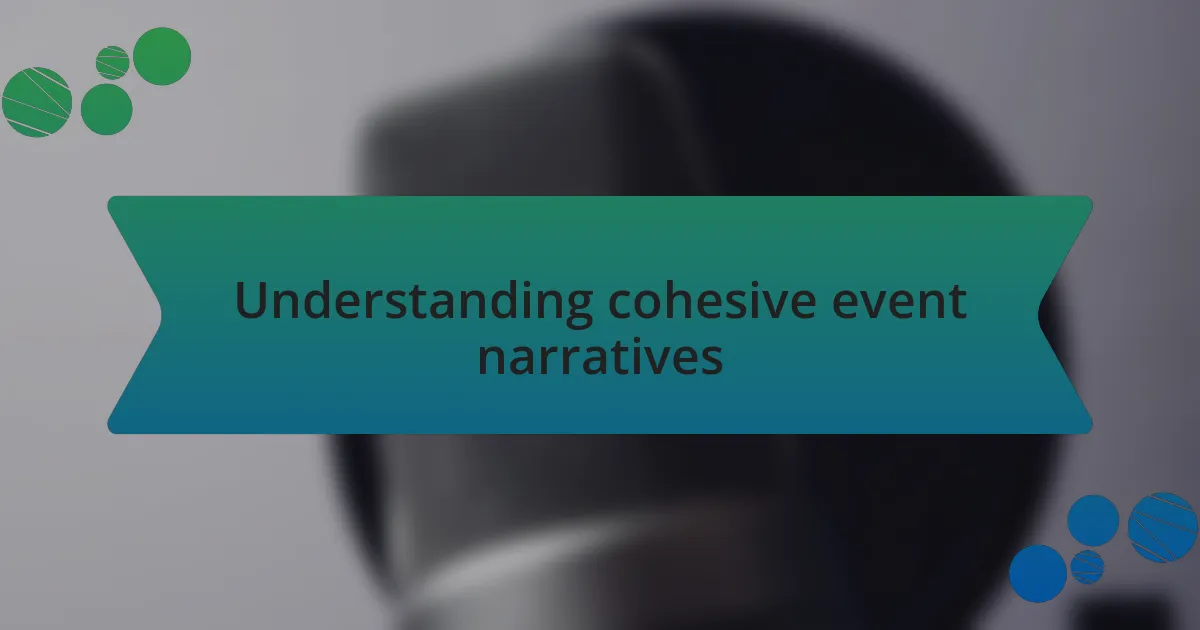
Understanding cohesive event narratives
Cohesive event narratives weave together the various elements of a gathering to create a unified experience. I recall attending an electronic music festival where every aspect—from the lineup to the stage design—felt like part of a larger story. Have you ever felt that electric buzz when everything seamlessly aligned, pulling you deeper into the moment?
To build these narratives, it’s essential to consider the emotions you want to evoke. For instance, I once collaborated on a label showcase where we used ambient sounds to guide guests from one performance to another, creating a sense of journey and anticipation. How do you want your audience to feel as they move through your event?
A successful cohesive narrative also requires attention to detail. I remember a small showcase where every lighting cue was timed to the beat of the music, enhancing our collective immersion. Isn’t it fascinating how these seemingly minor elements can elevate the entire experience and leave a lasting impression?

Importance of narratives in events
Crafting a compelling narrative for an event significantly enriches the atmosphere and connects attendees on a deeper level. I remember a night at a warehouse party where each DJ set told a story, gradually building from mellow vibes to an explosive climax. It made me wonder, have you ever noticed how narratives can transform music into emotions, making each beat feel personal?
Narratives also play a crucial role in audience engagement. During a recent event I organized, we incorporated themed installations that resonated with the music’s mood, creating immersive experiences. People lingered, taking photos and sharing stories about their favorite moments—how powerful is it to see guests not just enjoying the music, but living it?
Moreover, a well-structured narrative can help shape the event’s identity and brand. I recall launching a series of showcases under a common theme, which not only attracted a loyal following but elevated the perception of our label. Don’t you think having a story behind an event makes it more memorable and creates a sense of community among those who experience it together?
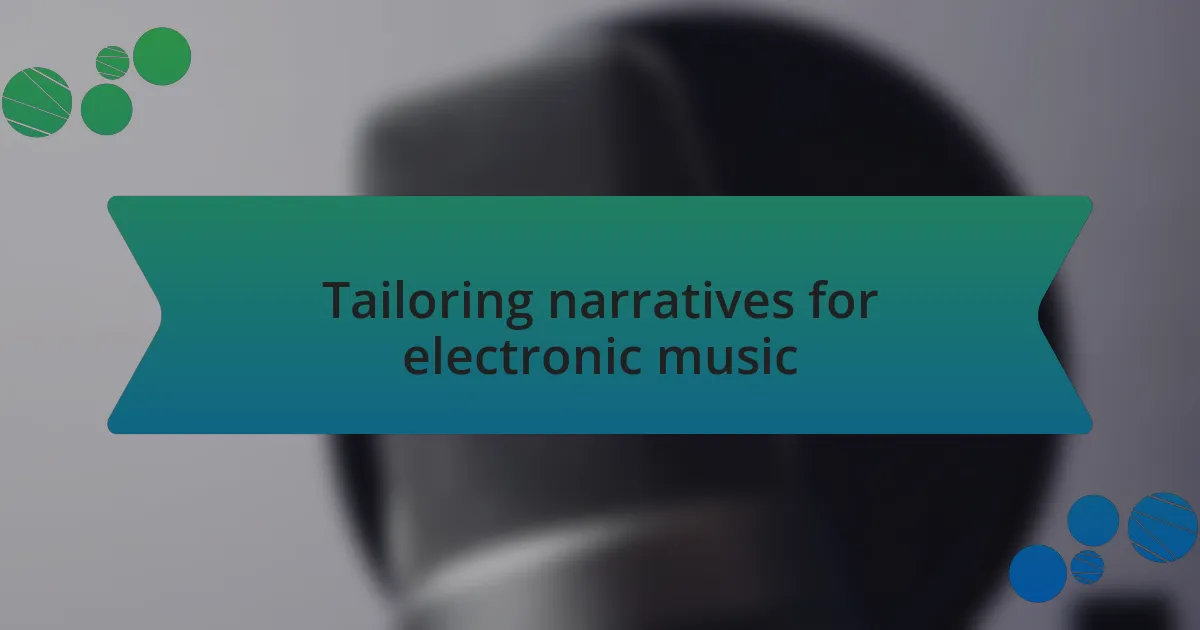
Tailoring narratives for electronic music
Tailoring narratives specifically for electronic music involves understanding the essence of the genre itself. I once worked on an event featuring ambient music, and we crafted a storyline revolving around a journey through soundscapes. Attendees were invited to immerse themselves in a sensory experience, which transformed their perception of electronic music—have you ever felt like a track took you on a trip to another world?
Using personal stories from artists can also enhance these narratives. At one festival, we encouraged each performer to share a unique experience or inspiration behind their set, which created an authentic connection with the audience. Listening to a DJ talk about how a particular city influenced their sound made me realize, the narrative doesn’t just enhance the event; it creates a bridge between the artist and the listener, fostering deeper appreciation for the music.
Another significant aspect is the relationship between visuals and sound. During a recent showcase, we used vivid visuals that echoed the narrative arc of each performance. The synchronized light displays evolved alongside the music, leaving a lasting impact on the audience—did you ever leave an event feeling like the visuals and beats were speaking to you in harmony? Crafting these cohesive narratives is paramount, as they can elevate electronic music from mere sound to a profound shared experience.
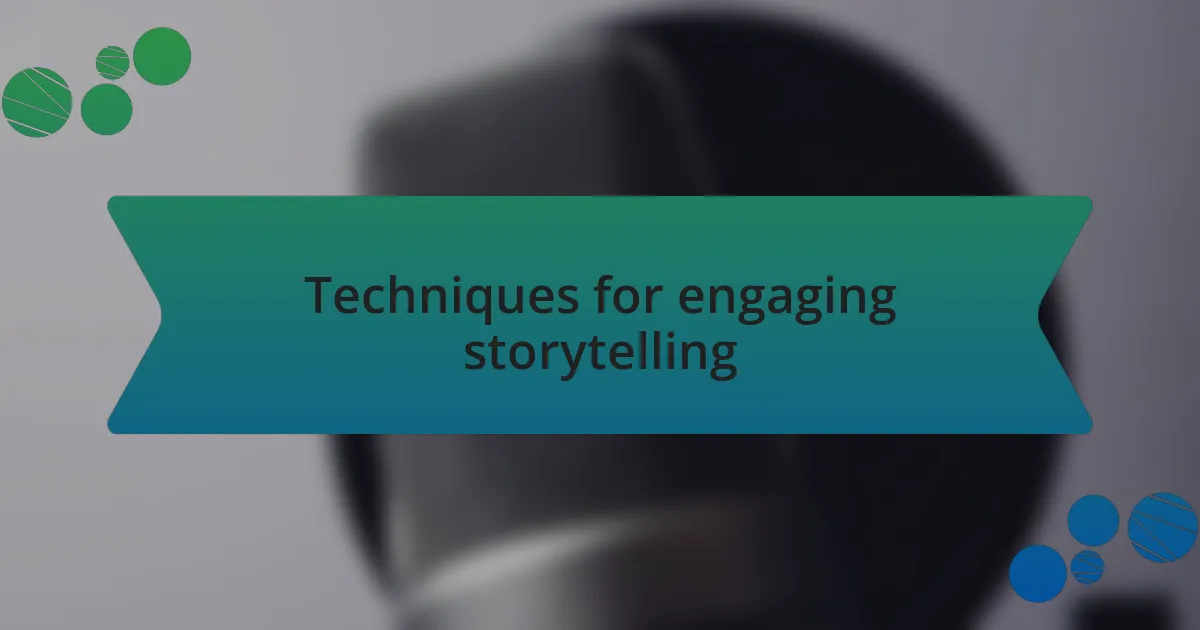
Techniques for engaging storytelling
One effective technique for engaging storytelling is the use of thematic motifs throughout an event. I once curated a night where we centered the narrative around the concept of “rebirth.” Each set was designed to represent a different stage of transformation, and the artists communicated this through their tracks. Have you ever witnessed how a theme can elevate music to a whole new level of meaning? It really encourages attendees to reflect on their own journeys.
Another approach I find immensely valuable is the integration of audience participation in the narrative. During one memorable event, we invited attendees to submit their own stories related to the music they love. Those narratives were then woven into the evening’s flow, creating a tapestry of shared experiences. Knowing the crowd was part of the narrative made them feel invested and connected—it’s amazing how personal stories can unite complete strangers under a shared love for music.
Lastly, I believe it’s crucial to build tension and release throughout the event. I recall a festival where we constructed a narrative arc akin to a rollercoaster ride; there were moments of high energy followed by quieter, introspective phases. This ebb and flow kept the audience captivated—did you ever notice how a well-timed pause can amplify the energy when it resumes? It’s a reminder that storytelling in music is not just about the beats, but the emotional journey we take together.
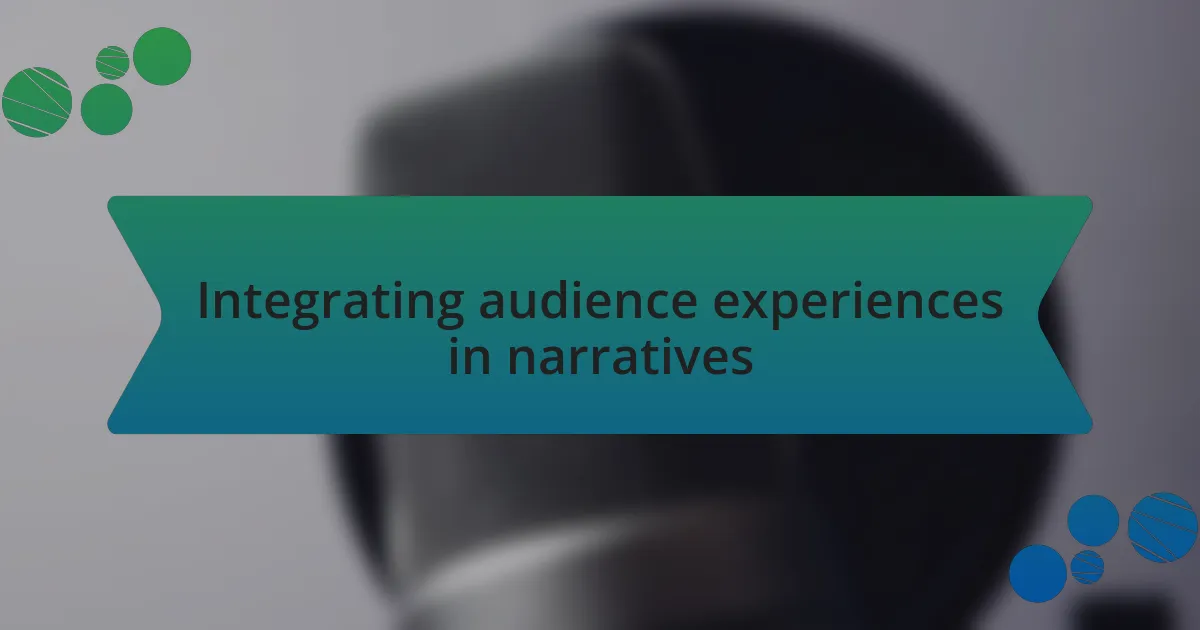
Integrating audience experiences in narratives
In my experience, integrating audience experiences into event narratives creates a powerful synergy. At one festival, I noticed how the energy shifted when I encouraged attendees to share their reactions in real-time through social media. This live engagement not only shaped the evening’s narrative but transformed the audience into active participants, igniting a palpable sense of community. Have you ever felt the thrill of being part of something larger than yourself?
During another event, I experimented with audience-led storytelling by creating designated moments for attendees to share their thoughts between sets. These candid exchanges often revealed unique perspectives on the music and deepened the emotional context of the night. I remember one attendee who shared a touching story about how a specific track helped them through a tough period. It’s moments like these that remind us of the transformative power of music.
Moreover, I found that incorporating curated audience playlists into the event flow adds another layer of connection. I once invited guests to vote on their favorite tracks before the event, and seeing those selections unfold live on stage made everyone feel heard and represented. It’s incredible how when you align the narrative with their voices, it creates an unforgettable collective experience. Isn’t it fascinating how those simple contributions can elevate the overall vibe of the event?
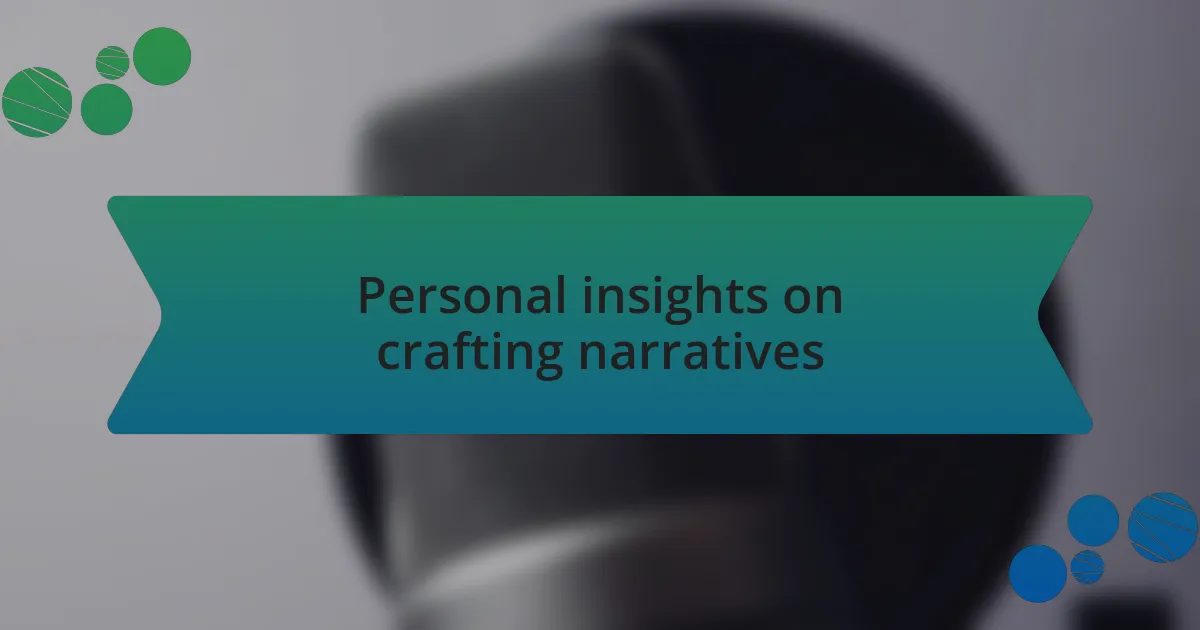
Personal insights on crafting narratives
Crafting cohesive narratives in the electronic music scene often feels like weaving a tapestry of diverse experiences. I once collaborated with a visual artist to coordinate a show, where the visuals were specifically designed to reflect the journey of the event’s music. Watching the audience’s reactions unfold in response to the syncopation of beats and visuals was electrifying. How does it feel when everything you experience resonates with your very soul? It’s like finding that perfect track that aligns with your mood.
I’ve learned that simplicity can be incredibly powerful in storytelling. During one intimate gathering, I decided to forego elaborate stage setups and instead emphasized the connection between the DJ and the crowd. I initiated a story-sharing moment where attendees expressed what music meant to them in that space. The resulting conversations felt raw and authentic, almost like a shared secret among strangers. Isn’t it incredible how music can draw out our stories, revealing our vulnerabilities and triumphs in a few heartfelt words?
What stands out to me is the importance of transitions within narratives. There was a time during a multi-artist showcase when I implemented seamless transitions between acts, transforming the mere change of artists into a smooth storytelling arc. As one artist finished, we set the scene with atmospheric sounds that carried the audience into the next, making them feel like they were part of a continuous journey. Have you ever experienced that lingering anticipation before the next beat drops? It keeps the narrative flowing, compelling the audience to ride along with every twist and turn.